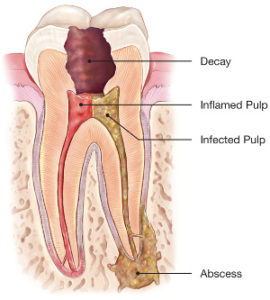
Tooth Savers to the Rescue!
Nothing looks feels or functions like your natural tooth. Regular brushing and flossing, along with six-month check-ups from your dentist, can help you keep your teeth for a lifetime.
Sometimes your teeth may have infection or disease and will need additional care. When possible, you should always consider treatments to save your teeth.
You might think it is easier or more cost-effective to simply pull a tooth, but what you may not realize is missing teeth can have a negative impact on your overall dental health and could also impact your quality of life. Missing teeth can cause other teeth to shift, affect your ability to properly chew and ruin your smile. Furthermore, replacing an extracted tooth with an artificial one requires additional dental visits that can quickly add up.
One such tooth-saving treatment is called endodontic treatment, or more commonly known as a root canal.
Root Canal Awareness Week celebrates this tooth-saving procedure and those responsible for saving the teeth.
Root canal treatment is necessary when the pulp, the soft tissue inside the root canal, becomes inflamed or infected. The inflammation or infection can have a variety of causes: deep decay, repeated dental procedures on the tooth, or a crack or chip in the tooth. In addition, an injury or trauma to a tooth may cause pulp damage even if the tooth has no visible chips or cracks. If pulp inflammation or infection is left untreated, it can cause pain or lead to an abscess.

Signs to look for include pain, prolonged sensitivity to heat or cold, tenderness to touch and chewing, discoloration of the tooth, and swelling, drainage and tenderness in the lymph nodes as well as nearby bone and gum tissues. Sometimes, however, there are no symptoms.
Root canal treatments are often a straightforward procedure.
When you undergo a root canal, the inflamed or infected pulp is removed and the inside of the tooth is carefully cleaned and disinfected, then filled and sealed with a rubber-like material called gutta-percha. Afterward, the tooth is restored with a post and crown or filling for protection and to restore the tooth to its full function.
Most endodontically treated teeth last as long as other natural teeth. In a few cases, a tooth that has undergone endodontic treatment does not heal or the pain continues. Occasionally, the tooth may become painful or diseased months or even years after successful treatment.
For more information please visit AAE.
Leave a reply →
